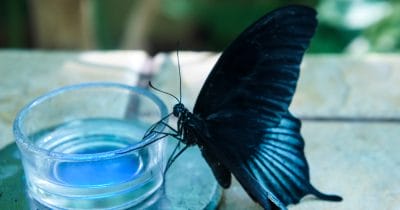
The first time I visited Miami Seaquarium was a magical experience. I was completely captivated by the impressive animals and amazing shows – something that would forever shape my perspective on ocean creatures.
But over the years, and with more reflection, I’ve also started to think about the challenges and ethical questions that come with keeping large marine animals in captivity.
One question that’s always intrigued me is why we rarely see apex predators like great white sharks in aquariums, while other sea creatures seem to be a given.
Didn’t even survive a full day
So, have you also wondered why you’ll never see a great white shark in an aquarium? Here’s the heartbreaking truth behind why these magnificent creatures simply can’t survive in captivity, and it’s a lot more emotional than you might think.
As mentioned, visiting an aquarium can be a magical experience. You get to see dolphins, turtles, jellyfish, and all kinds of sea life up close. But there’s one animal you’ll never encounter: the great white shark.
These apex predators, while impressive, can’t live in an aquarium for a reason.
Despite their size being similar to that of other sea creatures, great whites require far more space than any tank can provide. Without that space to swim freely, they become stressed and sick. And here’s the sad part: keeping them in captivity has never worked.

The first attempt to house a great white shark was in 1955 at Marineland of the Pacific in Los Angeles. Tragically, the shark didn’t even survive a full day. The same marine park even had blue sharks in one of their tanks back in 1955, and they had to be force-fed just to keep them alive. Divers were sent in to physically pry open the shark’s jaws and push mackerel down its throat to prevent it from starving.
In 1981, Marineland made another ambitious attempt to keep a great white shark alive in captivity. They captured a one-year-old female, hoping her smaller size and young age would improve her chances of survival in one of the park’s tanks.
At first, things looked promising. But after just a week, the 58-inch, 50-pound shark died — despite scientists monitoring her around the clock.
Fast forward to today, and many attempts have been made, but all have ended the same way – the sharks either had to be released or tragically died within days.
The Monterey Bay Aquarium holds the record for keeping a great white the longest: 16 days. But even then, the shark died soon after being released back into the wild.
Several reasons
So, why is it so difficult to keep great white sharks in aquariums?
First, their diet. These sharks are carnivores, and their menu includes live prey – tuna, rays, even seals. In an aquarium, feeding them live animals would be not only costly but also disturbing for visitors.
Then there’s their need to keep moving. Unlike other fish, great whites must keep swimming to breathe. They can’t stop or swim backward; the water has to flow into their mouths and through their gills for oxygen. To provide the space they need, aquariums would have to build tanks so massive, they’d be prohibitively expensive.
But the worst part? Great white sharks just can’t thrive in captivity.

Many times, they stop eating, starve, and even become aggressive out of frustration. As Shark Bookings puts it, ”Great white sharks kept within tanks have been known to head butt their noses into the glass walls and lose their appetites… they get increasingly aggressive in their depressed state.”
Ultimately, it’s heartbreaking, but the best place for great white sharks is in the wild, swimming freely through the ocean. Jaws and his friends were never meant to be confined to glass tanks.
So next time you visit the aquarium, remember that some animals, like the great white, will always be better off in the vast, open sea where they belong.
READ MORE
- What is a Rainbow kiss? The trend that has the internet gasping
- How dogs can know if a person is good or bad





